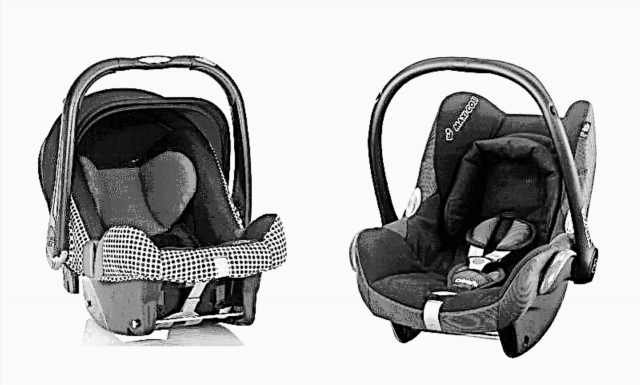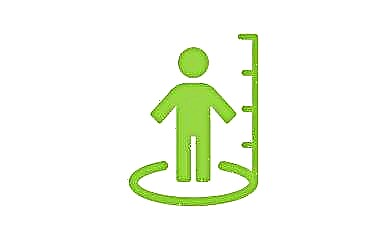
Xylometazoline is often used for rhinitis in adults, since it effectively narrows the vessels of the nose and helps to quickly and permanently get rid of the unpleasant symptoms of the common cold. But is it possible to use such a remedy in children and in what dosage is this medication allowed in childhood?

Release form
The drug is produced by several Russian companies in two forms:
- Nasal drops.
- Nasal spray.
Both variants of Xylometazoline are represented by a yellowish or colorless liquid that has a peculiar odor. The amount of such a solution in one bottle from different manufacturers ranges from 10 to 25 ml. The drug can be called simply Xylometazoline, and have a prefix, for example, Xylometazoline-solopharm, but the active substance in such drugs is the same.


Composition
The main component of Xylometazoline, due to which the drug has a therapeutic effect, is a substance with the same name - Xylometazoline hydrochloride. Since both dosage forms of the drug are presented in two different concentrations, the content of xylometazoline in 1 milliliter of drops or spray can be 500 μg in 0.05% drug and 1 mg in a drug with a concentration of 0.1%.
Excipients differ depending on the form and manufacturer.
Among them you can see macrogol, eucalyptus oil, edetate disodium, sorbitol, benzalkonium chloride, sodium hydrogen phosphate and other compounds. If a child has a tendency to allergies, it is important to clarify the list of such ingredients in the purchased Xylometazoline.


Operating principle
The medication, after getting on the nasal mucosa, after a few minutes, causes vasoconstriction due to its effect on alpha-adrenergic receptors. This effect of the drug leads to the restoration of the patency of the nasal passages, a decrease in redness and swelling of the nasopharyngeal mucosa, and relief of nasal breathing. The action of Xylometazoline lasts up to 10 hours. At the same time, the medication does not penetrate into the general bloodstream, since with local use it is almost not absorbed.

Indications
Xylometazoline is prescribed for children with acute respiratory diseases, one of the manifestations of which is rhinitis. The drug is used for sinusitis, hay fever and acute allergic rhinitis. It is also in demand with otitis media, as one of the means of combined treatment. In addition, it is used to prepare a small patient for rhinoscopy or other manipulation in the nasal area.
At what age is it assigned?
Any form of Xylometazoline is contraindicated in children under 2 years of age. For the treatment of children who are 2 years old, you can use both a spray and drops, but only with a 0.05% concentration of the active ingredient. Preparations that contain 0.1% xylometazoline are allowed only from the age of six.


Contraindications
Xylometazoline is not prescribed:
- Children with hypersensitivity to any ingredient in the medicine.
- Small patients with tachycardia or arterial hypertension.
- Patients with atrophic rhinitis.
- Children diagnosed with glaucoma.
- Children with thyrotoxicosis.
- Babies who have previously undergone surgery on the lining of the brain.
If the child has diabetes mellitus, then the medicine should be used very carefully.


Side effects
If you use Xylometazoline for too long, or drip or inject the medication very often, this will lead to dryness and irritation of the mucous membrane, sneezing, increased rhinorrhea, burning sensation and other unpleasant local symptoms.
Also, some children, with very frequent and long-term treatment, develop tachycardia, heart rhythm disturbances, vomiting, sleep and vision disturbances, and blood pressure rises.

Instructions for use and dosage
Any form of Xylometazoline is administered intranasally, but not more than three times a day. Before using the medicine, you need to clear the baby's nose of discharge. If a medication is prescribed for acute respiratory infections in order to treat a common cold, then the course of therapy should not be longer than 5-7 days.
A child 2-6 years old is prescribed 0.05% medicine. If these are drops, then they are injected into each nostril, one or two drops. If a spray is used, then a single dosage is one injection into each nasal passage. Sometimes it is enough to inject the medication only once a day, but in most cases, it requires a double application.
In the treatment of children over six years old, 0.1% drugs are used. When a spray is prescribed, the medication is injected into each nostril one by one, and when using drops - 2 or 3 drops. The frequency of use is twice or three times a day.

Overdose
With a slight excess of the dosage, the side effects of the drug will increase. If the dose of Xylometazoline is greatly exceeded, it slows down the heart rate, increases blood pressure and lowers the body temperature of the little patient. In such a situation, you should immediately consult a doctor.
Drug compatibility
Xylometazoline cannot be used together with tricyclic antidepressants, as well as drugs that are MAO inhibitors. It is allowed to combine spray or drops with other products.

Terms of sale
Both the spray and nasal drops of Xylometazoline are over-the-counter medicines, so they can be purchased from most pharmacies without any problems. The price of a 10 ml bottle of drops starts from 30 rubles, and a spray starts from 60 rubles.
Storage conditions
It is recommended to keep any form of Xylometazoline at home at a temperature not higher than +25 degrees Celsius. For storage, a dry place out of direct sunlight is best. It is also important that small children do not have access to this place. The shelf life of both drops and spray is 3 years.


Reviews
The response to Xylometazoline treatment is mostly positive, because the effect of the drug is observed almost immediately after its use and it lasts for a long period. Moms more often choose a medicine in the form of a spray, since it is much more convenient to use a spray bottle (no need to throw your head back and count the drops). Negative reviews are rare and usually include complaints of side effects such as allergies or dry nose.


Analogs
Any other drugs with xylometazoline can be a substitute for the drug, for example:
- Galazolin;
- Tizine;
- Snoop;
- Otrivin;
- Xilen;
- Rhinomaris;
- For the nose;
- Rinostop;
- Rinonorm;
- Xymelin;
- Pharmazoline;
- Evkazolin Aqua;
- Sanorin-Xylo.
They are available both in drops and in the form of a spray, and some preparations are also presented as a nasal gel.

Like Xylometazoline, the concentration of the active substance in such agents is 0.05% and 0.1%.
Also, for children with a runny nose, the doctor may recommend nasal drops with another active compound, for example:
- Adrianol, in which tramazoline is supplemented with phenylephrine. Such a remedy is prescribed for children over 3 years old.
- Nazivin containing oxymetazoline. Such drops with a concentration of 0.025% are allowed for children over a year old. Analogs of this medication with the same active ingredient are Nazol, Knoxprey, Oxyfrin and other drugs.
- Nazol Baby, the action of which is provided by phenylephrine. These drops can be used in children of any age, including babies up to a year, but only after consulting a doctor.
See below for more details.



